Weapons TATP explosives Date 22 March 2016 | Non-fatal injuries 340 (62 critical) | |
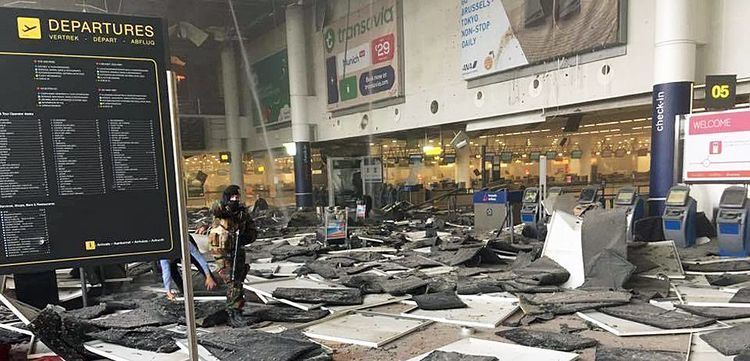 | ||
Coordinates Airport:Metro station: Target Civilians (possibly Americans and Jews), transport hubs Deaths 35 (32 victims, 3 perpetrators) Attack types Suicide attack, Mass murder Similar November 2015 Paris attacks, Charlie Hebdo shooting, 2016 Nice attack, 2011 Norway attacks, 2015 Tianjin explosions | ||
Documentary terror in brussels
On the morning of March 22, 2016, three coordinated suicide bombings occurred in Belgium: two at Brussels Airport in Zaventem, and one at Maalbeek metro station in central Brussels. Thirty-two civilians and three perpetrators were killed, and more than 300 people were injured. Another bomb was found during a search of the airport. Islamic State of Iraq and the Levant (ISIL) claimed responsibility for the attacks.
Contents
- Documentary terror in brussels
- Background
- Terrorist cells in Brussels
- Attacks
- Brussels Airport
- Maalbeek metro station
- Victims
- Profiles
- Investigation
- Aftermath
- Belgium
- Other countries
- Reactions
- References
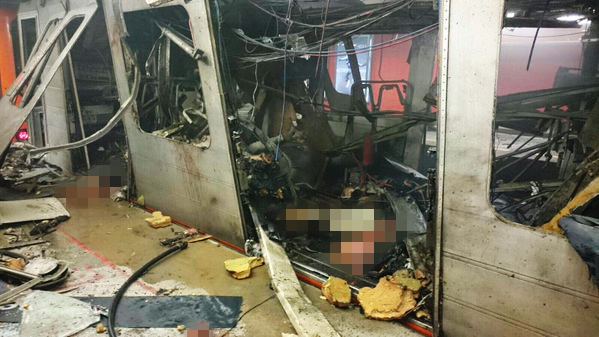
The perpetrators belonged to a terrorist cell which had been involved in the November 2015 Paris attacks. The Brussels bombings happened shortly after a series of police raids targeting the group.
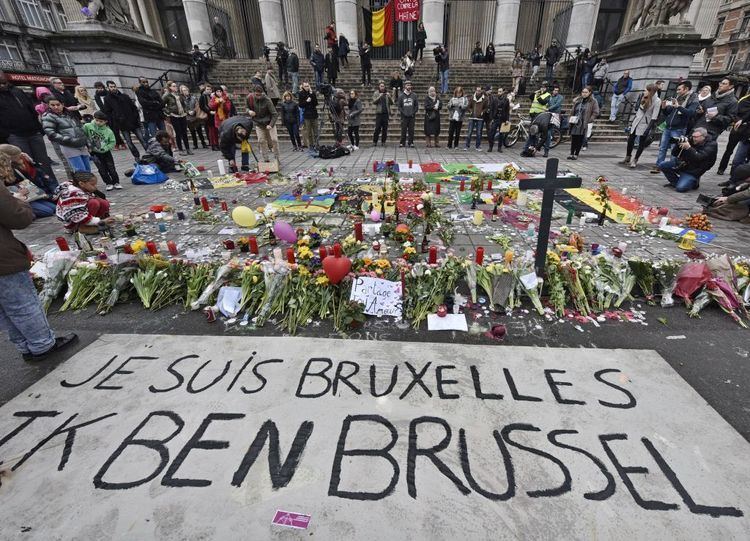
The bombings were the deadliest act of terrorism in Belgium's history. The Belgian government declared three days of national mourning.
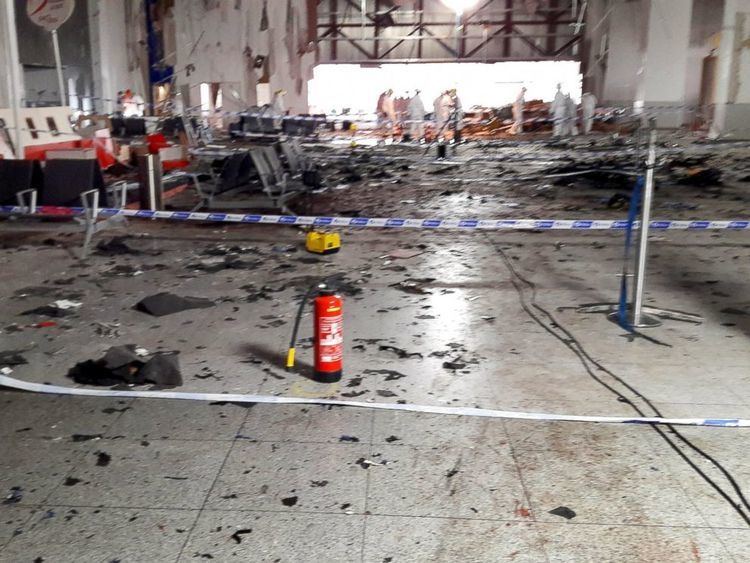
Background
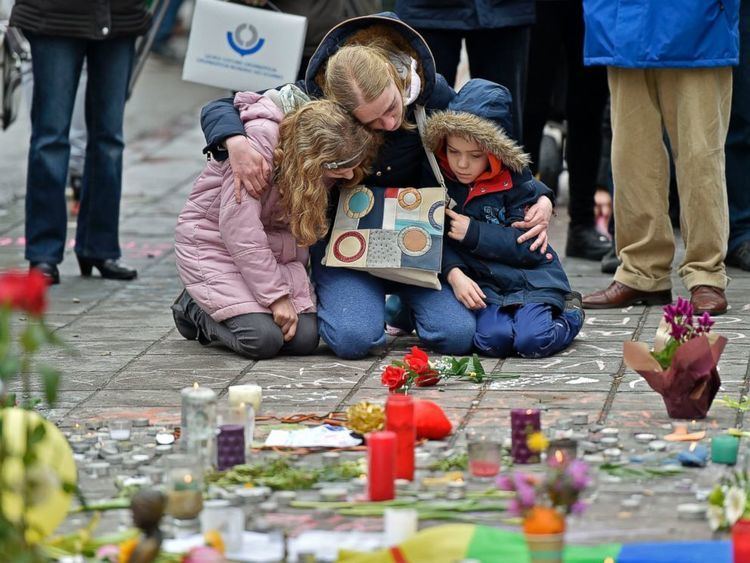
Belgium is a participant in the ongoing military intervention against ISIL, during the Iraqi Civil War. On 5 October 2014, a Belgian F-16 dropped its first bomb on an ISIL target, east of Baghdad. On 12 November 2015, Iraq warned members of the coalition that Abu Bakr al-Baghdadi, the leader of ISIL, had ordered retaliatory attacks on countries involved in the coalition against ISIL.
Belgium has more nationals fighting for jihadist forces as a proportion of its population than any other Western European country, with an estimated 440 Belgians having left for Syria and Iraq as of January 2015. Due to Belgium's weak security apparatus and competing intelligence agencies, it has become a hub of jihadist-recruiting and terrorist activity.
Terrorist cells in Brussels
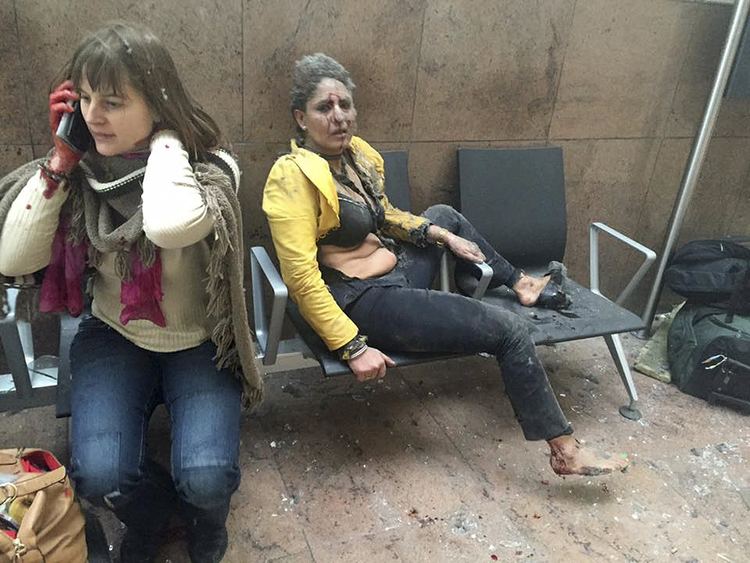
Before the bombings, several Islamist terrorist attacks had originated from Belgium, and a number of counter-terrorist operations had been carried out there. In May 2014, a gunman with ties to the Syrian Civil War attacked the Jewish Museum of Belgium in Brussels, killing four people. In January 2015, anti-terrorist operations against a group thought to be planning a second Charlie Hebdo shooting had included raids in Brussels and Zaventem. The operation resulted in the deaths of two suspects. In August 2015, a suspected terrorist shot and stabbed passengers aboard a high-speed train on its way from Amsterdam to Paris via Brussels, before he was subdued by passengers.
The perpetrators involved in the November 2015 attacks in Paris were based in Molenbeek, and Brussels was locked down for five days to allow the police to search for suspects. On 18 March 2016, Salah Abdeslam, a suspected accomplice in those attacks, was captured after two anti-terrorist raids in Molenbeek that killed another suspect and injured two others. At least one other suspect remains at large. During interrogation, Abdeslam was presented with photographs of the Bakraoui siblings, who would later be suspected of committing the attacks in Brussels three days later. Belgian investigators believe that Abdeslam's arrest may have hastened the Brussels bombings. According to the Belgian Interior Minister, Jan Jambon, who spoke after the bombings, authorities knew of preparations for an extremist act in Europe, but they underestimated the scale of the attack.
Attacks
There were three coordinated attacks: two nail bombings at Brussels Airport, and one bombing at Maalbeek metro station.
Brussels Airport
Two suicide bombers, carrying explosives in large suitcases, attacked a departure hall at Brussels Airport in Zaventem. The first explosion occurred at 07:58 in check-in row 11; the second explosion occurred about nine seconds later in check-in row 2. The suicide bombers were visible in CCTV footage. Some witnesses said that before the first explosion occurred, shots were fired and there were yells in Arabic. However, authorities have stated afterwards that no shots were fired.
A third suicide bomber was prevented from detonating his own bomb by the force of a previous explosion. The third bomb was found in a search of the airport and was later destroyed by a controlled explosion. Belgium's federal prosecutor confirmed that the suicide bombers had detonated nail bombs.
Maalbeek metro station
Another explosion took place just over an hour later in the middle carriage of a three-carriage train at Maalbeek metro station, located near the European Commission headquarters in the centre of Brussels, 10 kilometres (6 mi) from Brussels Airport. The explosion occurred at 09:11 CET.
The train was travelling on line 5 towards the city centre, and was pulling out of Maalbeek station when the bomb exploded. The driver immediately stopped the train and helped to evacuate the passengers. The Brussels Metro was subsequently shut down at 09:27.
Victims
In the bombings, 35 people, including three suicide bombers, were killed and over 300 others were injured, 62 critically. Including the attackers, seventeen bodies were recovered at Brussels Airport and fourteen at the metro station. Four people later died of their wounds in hospital. Eighty-one others were injured at the airport, while the rest were injured at the metro station. The bombings were the deadliest act of terrorism in Belgium's history.
Sixteen of the deceased were Belgian nationals; four were Americans; two each were from the Netherlands and Sweden; and the remaining eight each hailed from a different nation. Among the fatalities at Zaventem was André Adam, former Belgian Permanent Representative to the United Nations and, later, former Ambassador to the United States.
Profiles
A total of five attackers were involved, with three of them dying in suicide bombings and the remaining two arrested in the weeks after. All had involvement in the planning and organization of the November 2015 Paris attacks. They were identified and named as:
In security camera video of Brussels Airport, Ibrahim El Bakraoui, Laachraoui, and Abrini were seen pushing suitcases believed to have contained the bombs that exploded in the departure hall. A taxi driver who drove them to the airport said he tried to help the men with their luggage but they ordered him away. Initial reports elaborated El Bakraoui and Laachraoui each apparently wearing a glove which may have concealed detonators to the explosives. This was later proven to be untrue, with both being barehanded.
Investigation
Within 90 minutes of the airport attack, the area around an apartment in Schaerbeek, a northern district of Brussels, was cordoned off by police. The authorities received a tip-off from a taxi driver once they released photos of the suspects several hours after the attacks. Inside the home, they discovered a nail bomb, 15 kilograms (33 lb) of acetone peroxide, 151 litres (33 imp gal; 40 US gal) of acetone, nearly 30 litres (7 imp gal; 8 US gal) of hydrogen peroxide, other ingredients for explosives, and an ISIL flag. At least one resident reported unusual smells to the police, resulting in Agent de Quartier policeman Philippe Swinnen visiting the building twice in three months, but not entering.
Authorities also found a laptop belonging to Ibrahim El Bakraoui, inside a waste container near the house. The laptop had a suicide note stored on it, in which Ibrahim stated that he was "stressed out", felt unsafe, and was "afraid of ever-lasting eternity". It also contained images of the home and the office of the Belgian Prime Minister, Charles Michel, among information on multiple other locations in Brussels.
Numerous related arrests followed after the bombings. As of 26 March, twelve men had been arrested in connection with the bombings.
Aftermath
Raids and searches were made across Belgium, while security was heightened in a number of countries as a result of the attacks.
Belgium
Authorities temporarily halted air traffic to the airport and evacuated the terminal buildings. The airport was to be closed to passenger traffic and reopening date postponed several times with a projected reopening date of 29 March. The Berlaymont building, which is near Maalbeek station and is the headquarters of the European Commission, was placed in lockdown. Controlled explosions were carried out on suspicious objects around Maalbeek station.
All public transport in the capital was shut down as a result of the attacks. Brussels-North, Brussels-Central, and Brussels-South stations were evacuated and closed, and Eurostar journeys to Brussels Midi station were cancelled. All trains from Paris to Brussels were also cancelled. Taxis in Brussels transported passengers free-of-charge for the duration of the lockdown. Paris Nord railway station, with services to Brussels, was also temporarily closed.
The Belgian Interior Ministry raised the terror alert level in the country to the highest level following the attacks. The government warned that some perpetrators might still be at large and urged citizens to reach friends and family using social media to avoid congesting the telephone networks.
The country's two nuclear power plants – Tihange and Doel – were partially evacuated as a precaution.
Temporary border checks were implemented by Belgian and French authorities at some major crossings on the France-Belgium border.
The federal government announced three days of national mourning, lasting from Tuesday until Thursday, and flags were flown at half-mast on public buildings. They also held a one-minute silence at noon local time on 23 March.
Also on 23 March, Belgian Muslim groups, such as the League of Imams in Belgium and Executive of the Muslims in Belgium, publicly condemned the bombings and expressed their condolences to the victims and their families.
The airport was closed on 22 March, with reopening postponed several times. On 29 March, an operational test was performed. The official reopening date was scheduled to be announced on 30 March. A post-reopening target of 800–1,000 passengers per hour was projected, compared to pre-bombing traffic of 5,000 passengers per hour. The delay in the reopening was attributed to extensive damage to the building's infrastructure. A temporary terminal was planned for use after the reopening. When the airport reopened, only Brussels Airlines would serve the airport, but other airlines would be allowed to return later.
On 29 March, it was revealed that Ibrahim and Khalid El Bakraoui were released from prison due to a law introduced in 1888 known as Lejeune, which allows inmates to be released after serving a third of their sentence. Belgian Interior Minister Jan Jambon stated that the governing parties had agreed to update the law in 2014. The Lejeune law first came under scrutiny after serial killer and child molester Marc Dutroux was released from prison in 1992.
Airport businesses were affected. Hotel closures included the Sheraton Brussels Airport Hotel and Four Points by Sheraton Brussels. Cargo flights resumed on 23 March. Car rental offices were also closed.
Following memorials to the victims, disturbances broke out, resulting in riot police using water cannons to disperse violent right-wing protesters against ISIL.
On 30 March, plans to reopen the airport were cancelled again due to a strike by airport police over a dispute over inadequate security. The dispute was resolved, and the airport was later scheduled to be reopened on 3 April. On that day, a Brussels Airlines flight left for Faro and a flight to Athens and Turin was scheduled for the same day. Upon reopening, only passengers were allowed to enter a temporary departure hall and security checkpoints were implemented at the roadway to the airport. Only car and taxi traffic were allowed to enter but public transit remains suspended. Hotel business revenue in Brussels had been cut in half since the airport closure.
On 1 April, religious leaders in Brussels gathered together for a memorial to the victims of the bombings. They expressed their desire to spread a religious message of unity throughout Belgium, and to combat extremism.
On 25 April, the Maalbeek metro station reopened with heightened security. On 1 May, the departure hall of Brussels Airport, which had sustained the most damage during the bombings, partially reopened with the airport on high alert.
Other countries
Soon after news of the attacks broke, security was increased, particularly at airports, railway stations and other transport hubs, in China, Denmark, France, Germany, Greece, Indonesia, Ireland, Italy, Japan, Malaysia, Malta, the Netherlands, the Philippines, Thailand, the United Kingdom, and the United States. Also, Portugal evacuated the check-in section for 20 minutes due to a suspicious abandoned bag. In addition, Israel stopped flights from Europe for the rest of the day; additional police were deployed to the Belgian border with the Netherlands; the United Kingdom's Foreign and Commonwealth Office said the Belgian authorities were advising against non-essential travel to Brussels; and officials at the U.S. Embassy in Brussels warned of the possibility of more attacks, recommending "sheltering in place and avoiding all public transportation".
Reactions
In a televised address to the nation on 22 March, King Philippe expressed his and Queen Mathilde's sorrow at the events. He offered their full support to members of the emergency and security services.
Following the bombings, several structures around the world were illuminated in the colours of the Belgian flag, including the Brandenburg Gate in Berlin, the Eiffel Tower in Paris, the Trevi Fountain in Rome, the National Gallery in London's Trafalgar Square, the Burj Khalifa in Dubai, and One World Trade Center in New York City.
